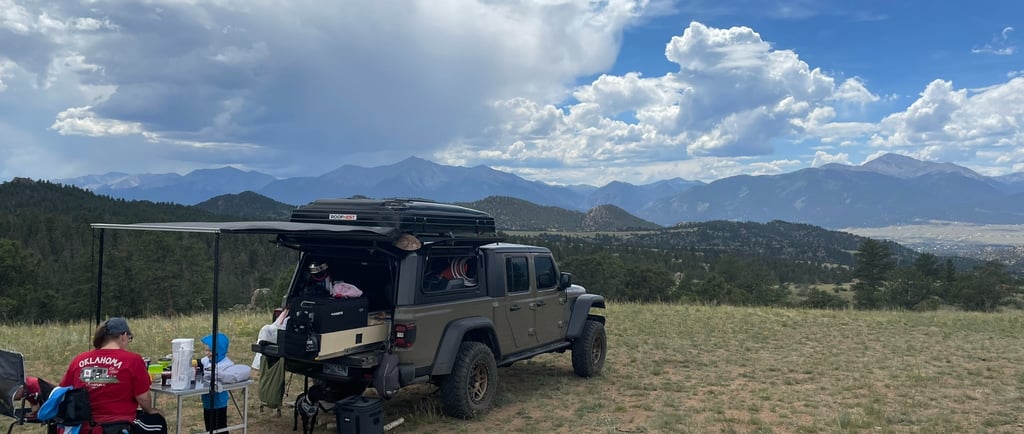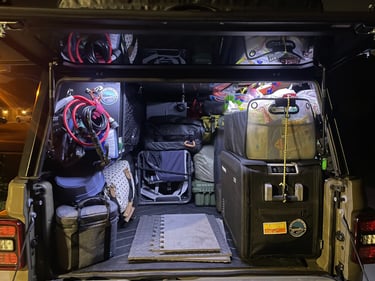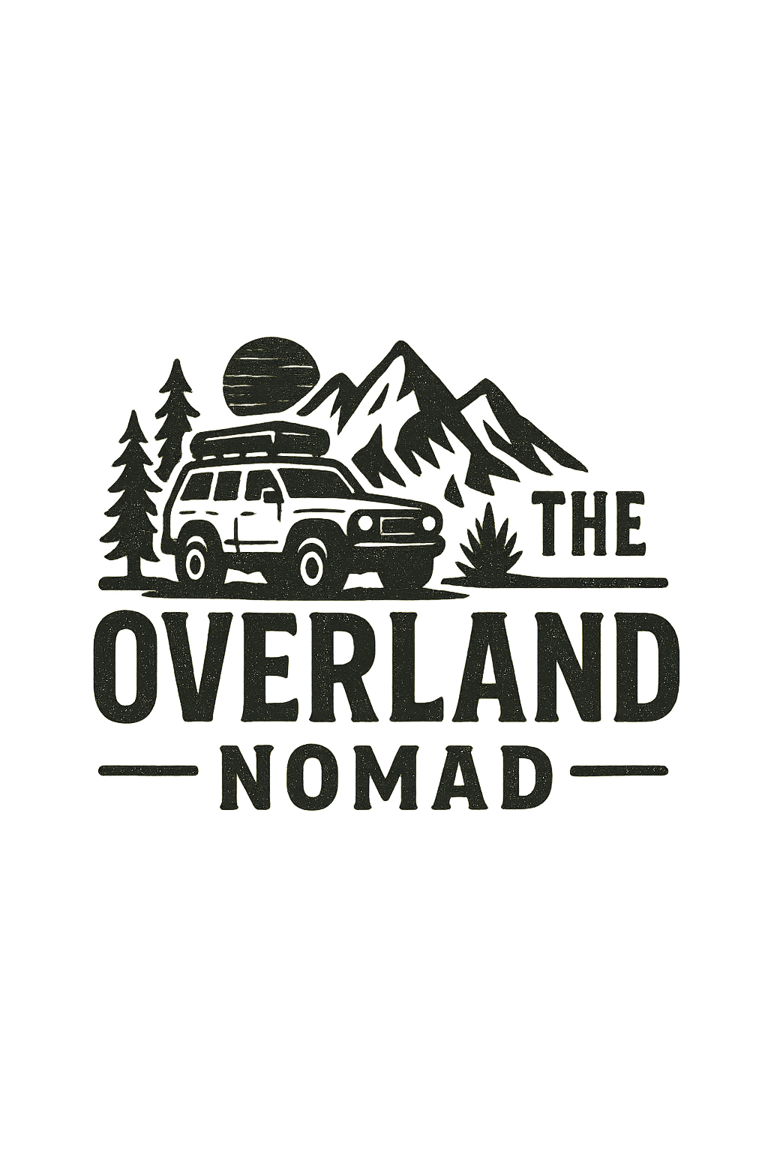Camping Light and Efficiently: How to Maximize Space Without Sacrificing Comfort
Discover expert tips for camping light and efficiently, whether you're in a compact SUV, a fully rigged overlanding vehicle, or towing an offroad trailer like the Mammoth Overland HV Camper. Learn how to optimize storage with DIY drawers, pack smarter with multi-use gear, and make the most of magnets and carabiners. Perfect for overlanders looking to save space, stay organized, and travel with ease—without sacrificing comfort or convenience.
The Nomad
6/6/20253 min read


Whether you're packing a compact SUV, a decked-out overlanding rig with Goose Gear drawers, or towing an offroad trailer like the HV Camper from Mammoth Overland (yep, I’ve got one and a review’s coming), traveling light is the real luxury.
1. Start with a Mindset, Not a Checklist
Efficient camping isn’t about having less—it’s about having exactly what you need. Ask yourself: Will I use this more than once? Can it serve multiple purposes? Can it pack down smaller? With every item, think “useful or useless.”
2. Magnets Are Magic
If your rig or trailer has metal interior surfaces—or even a tongue box—magnets with carabiners are your best friend. They keep essentials like lanterns, utensils, or shower bags off the floorboards and bed space. Not only does this cut clutter, it keeps your gear cleaner and easier to access. Pro-tip: don't buy magnets that are too strong unless the items you are hanging are either heavier or can get heavy (like towel bags that might wind up wet and heavy).
3. Customize Everything—Especially Storage
Custom drawer systems (think Goose Gear, DIY plywood
builds, or aluminum extrusions) let you fit your gear like
a glove. But here’s the pro move: modify your gear to fit
your system. Cut foam pads down to fit your drawer.
Ditch the bulky case your camp stove came in and
make a slimmer roll-top wrap instead.
Think like a backpacker—compress and consolidate—
but enjoy the space and power of your overland rig.
4. Embrace the Grocery Stop
Don’t feel like you have to haul a week’s worth of food. Grocery stores aren’t cheating—they’re strategic. A mid-trip stop breaks up the roughing-it fatigue (especially for kids), and it lets you keep meals fresh and flexible. Grab some local produce, restock snacks, and pivot your plan if your cravings change. Plus, lighter food loads mean better fuel economy and less cluttered storage.
5. Essential Gear That Pulls Double Duty
Here are some items that earn their keep in any setup:
Collapsible bins: Organize your gear, then fold them flat when not in use. No need to break the bank here. Just make sure they are of a good enough quality to hold up to potential bumps and bruises as you shift gear around your rig.
Storage rule: Hard gear goes into soft bags, and soft gear goes into hard containers. Aside from food, this rule will keep your gear safe and in good working order as well as pack away nicely as you organize.
Multi-use utensils: Sporks, nesting bowls, and collapsible mugs. This set of utensils from Full Windsor are by far the best I have tried. Light, easy to clean, and compact with convenient magnets. Allowing you to stick them to metal surfaces and keep them off the ground.
Soft-sided coolers: Lighter and more flexible than hard cases; great for quick grab-and-go.
Rechargeable lights with hooks/magnets: Lanterns that clip, hang, or mount wherever you need them. You can double-duty the carabiner magnets mentioned above if your lantern/light has handles. I use these Goal Zero lanterns from REI. They fold flat and solar charge. Just toss them on your dashboard as you move to your next spot.
6. Know Your Rig, Know Your Limits
If you're in a small SUV, you need to be ruthless about what stays and what goes. A dual-purpose item beats a single-use one every time. In a full build-out with drawers or trailers, resist the temptation to bring everything. Space equals comfort—but only if it's breathable and organized.
Final Thoughts: Freedom in Simplicity
Some of my best nights off-grid came when I packed light, ate simply, and had space to breathe—both in my rig and in my mind. There is also some kind of catharsis that occurs as you spend your time on the grid dialing in your kit. Just try and keep a list of where you move stuff on your phone, that'll save you from the frustration of scrambling for gear that you can't remember where it was rehomed. Most importantly, overlanding isn’t about bringing the whole house with you (trust me, the kitchen sink is fine where it is). It’s about bringing just enough to feel safe, comfortable, and ready to explore.


